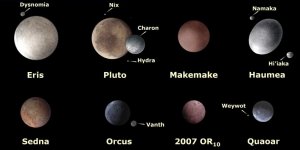| News / Space News |
Cassini Finds Flooded Canyons on Titan
NASA | AUGUST 14, 2016
NASA's Cassini spacecraft has found deep, steep-sided canyons on Saturn's moon Titan that are flooded with liquid hydrocarbons. The finding represents the first direct evidence of the presence of liquid-filled channels on Titan, as well as the first observation of canyons hundreds of meters deep.

NASA's Cassini spacecraft pinged the surface of Titan with microwaves, finding that some channels are deep, steep-sided canyons filled with liquid hydrocarbons. One such feature is Vid Flumina, the branching network of narrow lines in the upper-left quadrant of the image. ![]()
The Cassini observations reveal that the channels -- in particular, a network of them named Vid Flumina -- are narrow canyons, generally less than half a mile (a bit less than a kilometer) wide, with slopes steeper than 40 degrees. The canyons also are quite deep -- those measured are 790 to 1,870 feet (240 to 570 meters) from top to bottom.
The branching channels appear dark in radar images, much like Titan's methane-rich seas. This suggested to scientists that the channels might also be filled with liquid, but a direct detection had not been made until now. Previously it wasn't clear if the dark material was liquid or merely saturated sediment -- which at Titan's frigid temperatures would be made of ice, not rock.
Key to understanding the nature of the channels was the way Cassini's radar signal reflected off the bottoms of the features. The radar instrument observed a glint, indicating an extremely smooth surface like that observed from Titan's hydrocarbon seas. The timing of the radar echoes, as they bounced off the canyons' edges and floors, provided a direct measure of their depths.
The presence of such deep cuts in the landscape indicates that whatever process created them was active for a long time or eroded down much faster than other areas on Titan's surface. The researchers' proposed scenarios include uplift of the terrain and changes in sea level, or perhaps both.
While the altimeter data also showed that the liquid in some of the canyons around Ligeia Mare is at sea level -- the same altitude as the liquid in the sea itself -- in others it sits tens to hundreds of feet (tens of meters) higher in elevation. The researchers interpret the latter to be tributaries that drain into the main channels below.
YOU MAY ALSO LIKE



